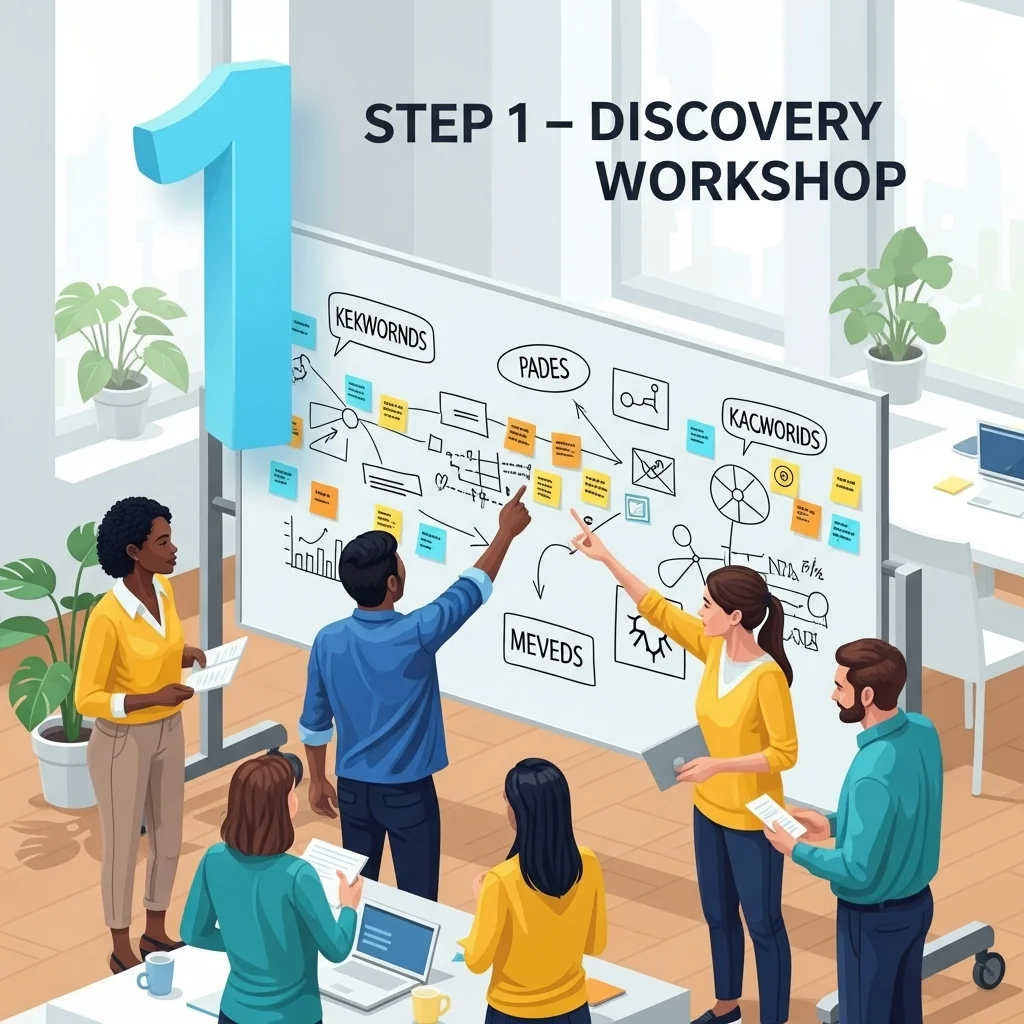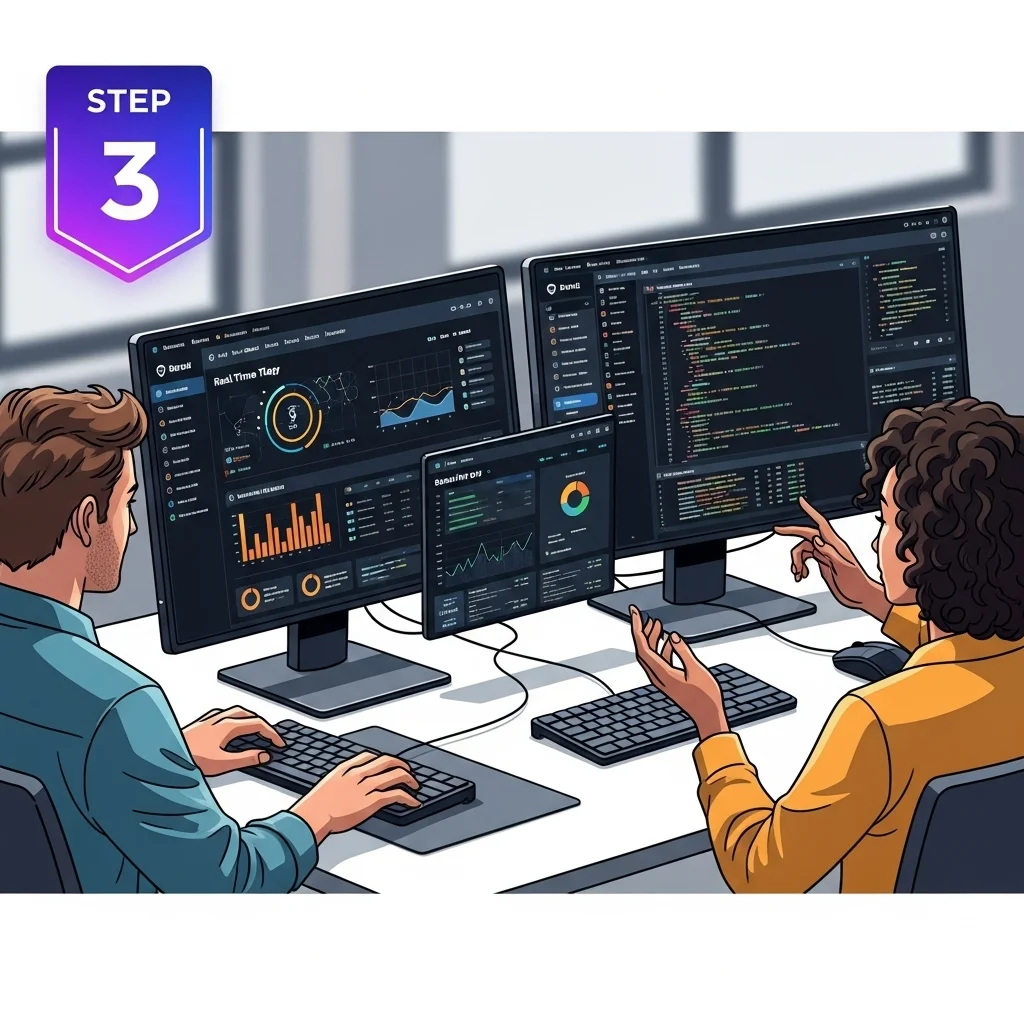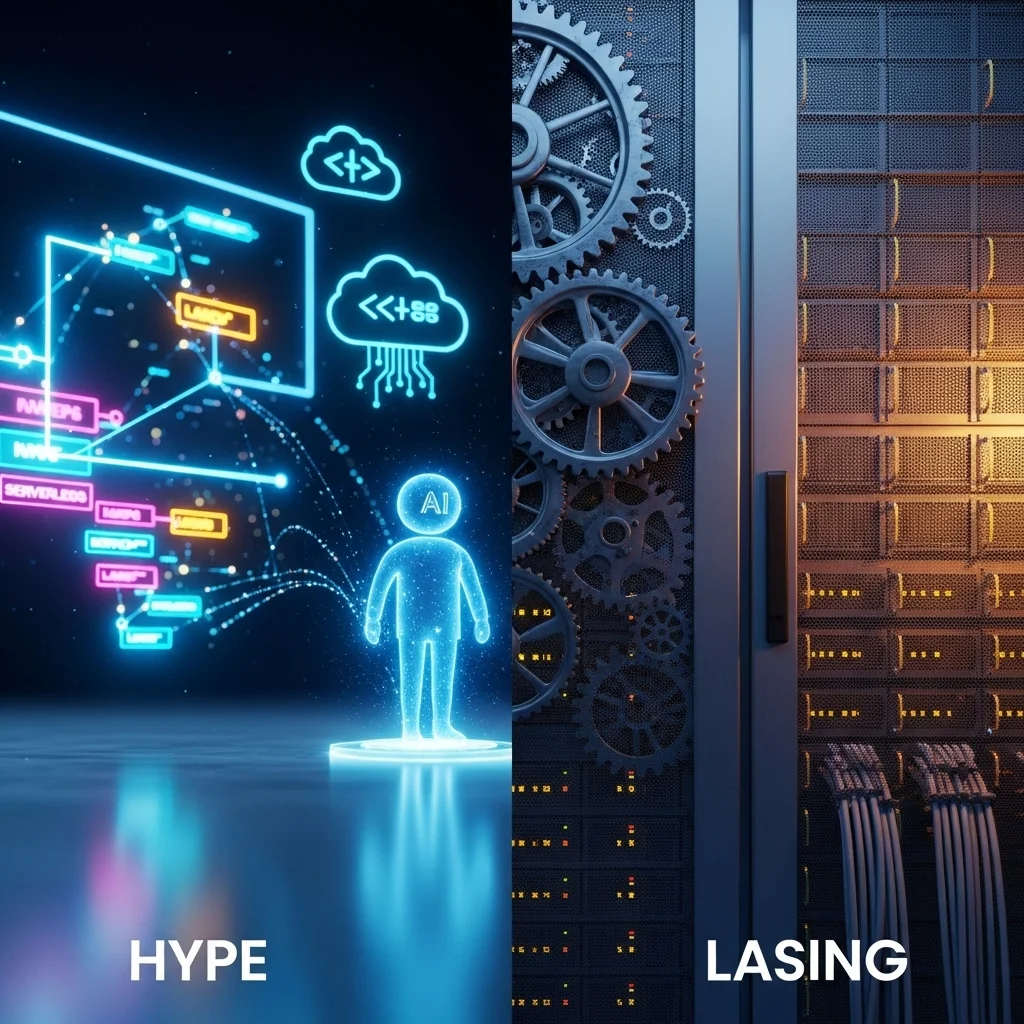why speed up now
the market keeps moving, legacy won’t wait — software development is no luxury but pure survival strategy
Automate
Free teams from manual labour by smartly codifying processes. Fewer errors, more focus on value creation.
Integrate
Connect APIs, ERPs and external services seamlessly. This creates a single source of truth everyone can rely on.
Innovate
Create room for experiments—proofs of concept, A/B tests, new business models—without disrupting your core.
Secure
Apply Secure Software Development guidelines from day one. Prevent data loss and reputational damage early on.
from idea to impact.
A Swiss Army knife is only useful when every blade is sharp and within reach

That is exactly how we view software development: broadly applicable, yet perfected down to the last detail.
what strikes me is that many organisations struggle in the design phase
They want to lock down everything before the first line of code appears. A fine intention, but it slows the feedback loop. We prefer to start small: a wireframe, one crucial user flow, immediate validation.
in practice security often comes too late
The NCSC’s warnings are clear: vulnerabilities mainly creep in early code. By embedding SSD measures—such as scheduled reviews and codified policy requirements—on time, you save piles of money and headaches later.
maintenance is not an after-calculation
Browsers update, frameworks evolve, users want something different tomorrow. Maintenance therefore demands the same discipline as development: test automation, CI/CD pipelines and a dedicated ownership model.
agile delivers fast iterations but requires strict priorities
waterfall can still work, best used for highly predictable tracks
hybrid models are gaining ground—especially in complex enterprise landscapes
How do you navigate this new B2B reality?.
Theory is fascinating, but the value lies in its translation to practice. Here is a step-by-step approach to implement our way of working without choking on complexity.

Step 1 – explore.
We start with a Discovery session, not only with the client but also with end-users. Their frustrations, goals and the why behind each feature come to the table. We then translate this into a concise Product Vision Board and a risk matrix.

Step 2 – shape.
During the Design phase, UX flows and architecture sketches constantly challenge each other. A brilliant screen without a robust backend? That’s a façade. We use interactive Figma prototypes so stakeholders can click, feel, grumble and cheer early on.

Step 3 – build.
Now it gets fun. Cross-functional squads code in two-week sprints. Clean code principles, pair programming and automated tests are standard. Security checks (OWASP ZAP, SAST) run in the same pipeline—so issues surface within minutes, not weeks.

Step 4 – improve.
After each release we hold a mini-retro. What worked, what didn’t, what will we fix immediately? We also monitor performance and usage with tools like Grafana and Datadog. That data feeds the backlog. Circle complete, yet never closed.


sitting on an idea that keeps nagging you?
Let us have a look. No buzzword-filled slide decks, just an honest talk about feasibility, risks and the fastest route to value. Drop us a message—we’ll put the kettle on.
a philosophical view on code

software as a living organism
Rather than static building blocks we see software as an ecosystem. Every component influences the whole—just as a new species can balance or disrupt a biotope.
evolution over revolution
Full refactors sound heroic, yet gradual mutation tends to have greater staying power. Microservices, feature toggles and canary releases allow adaptation without a big-bang migration.
ethics and responsibility
Code shapes behaviour. Therefore it is our duty to keep biases, dark patterns or unnecessary addictive elements at bay. Because, let’s be honest, technology is never neutral.
pure practice—concrete tips

apply immediately to your project
start every backlog item with a clear Definition of Done, including security acceptance criteria
document API contracts in OpenAPI/Swagger; prevents debates between teams
keep feature branches short-lived; merge daily to avoid integration hell
write tests before production code—even if it feels odd at first
enable dependency scanning (npm audit, Composer Audit) in your pipeline
configure automatic rollbacks on failed deployments: peace of mind
host a monthly bug bash with non-developers: surprisingly insightful
monitor user-flow heatmaps; sometimes a single unclear button causes 30% drop-off
a critical look at trends

hype or here to stay?
low-code platforms
Great for internal tools, but when it comes to distinctive core processes you soon hit limitations—vendor lock-in lurks.
generative AI in development
Copilot speeds up boilerplate, nice. Yet human code review remains crucial; AI also repeats old security mistakes.
serverless architecture
Cost-effective for unpredictable workloads, but traceability and cold starts need extra attention.
For every trend the rule applies: start small, measure, scale. Not the other way round.
😕 Why does software always take longer than expected?
Estimating unknown complexity is tough. By slicing work into small, clearly defined stories and replanning every sprint, you minimise surprises—though they never fully disappear.
🤔 Isn’t agile just a buzzword?
Agile is a mindset, not a magic wand. Teams that truly embrace iterative learning and customer feedback deliver visibly faster results. Without those principles, agile indeed degrades into sticky-note theatre.
🔒 How do I embed security without slowing down?
Automation is the answer. Integrate static code analysis, dependency checks and container scans into your CI/CD. This catches 80% of issues before the merge.
💸 Can I save costs by developing offshore?
Often yes on hourly rates. But watch communication, time zones and above all knowledge retention. Mixing near- and offshore with a local core team proves most robust in practice.
🚀 When should I choose microservices?
Not because Netflix does. Only when a monolith blocks teams from deploying independently or causes scaling issues is splitting sensible.
📊 Which KPIs really matter for development?
Lead time, deployment frequency, change fail rate and mean time to restore—the four Dora metrics—offer a reliable view of both speed and quality.
🧰 Which programming language is the most future-proof?
There is no silver bullet. Choose a language that fits your domain, has community support and integrates well with your existing stack.
😁 How do I keep my team motivated?
Give autonomy, celebrate small wins and allow innovation days. Developers thrive when they can experiment and see direct customer impact.










.webp)
